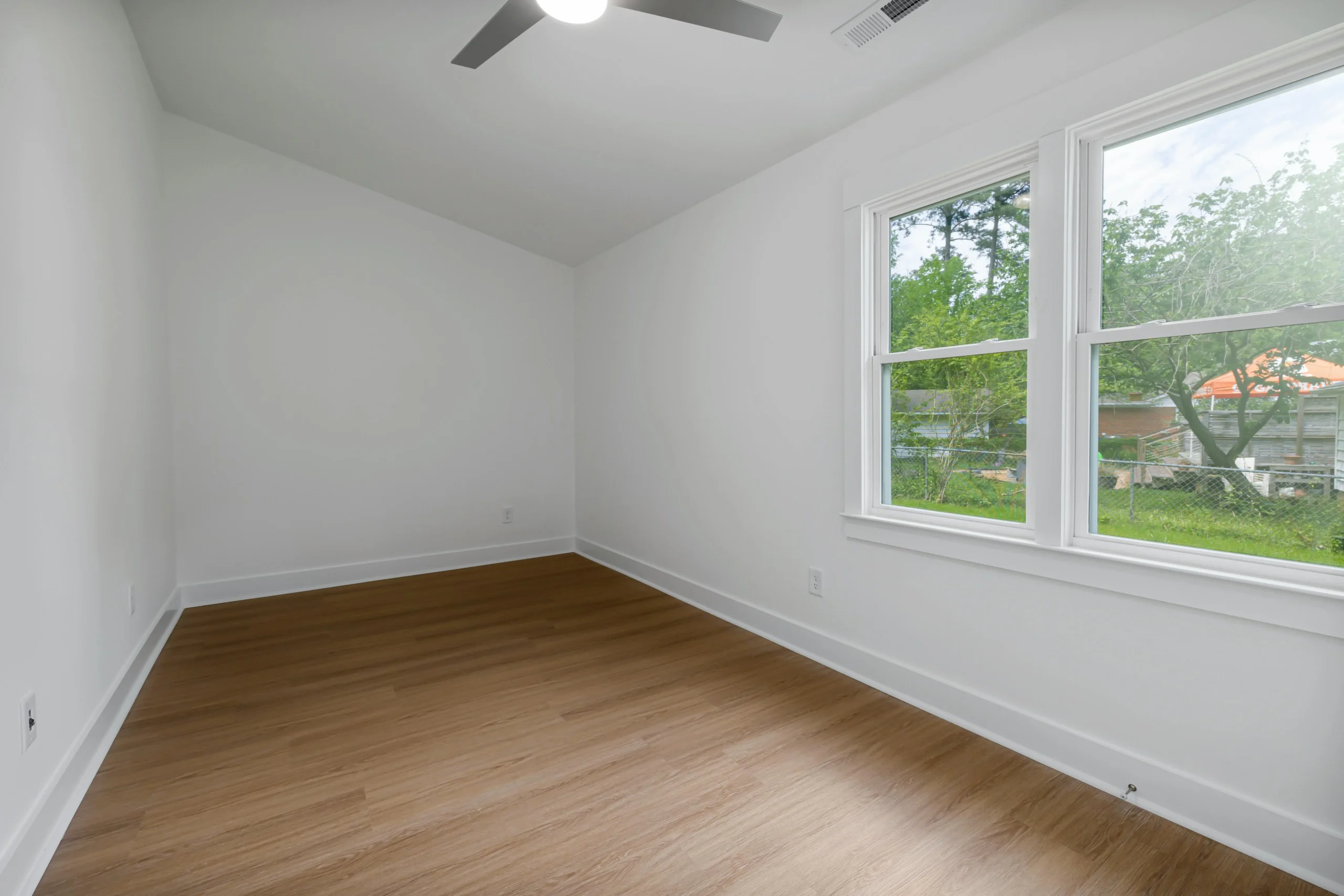Laying floor panels is a popular way to quickly and effectively change an interior. Thanks to the variety of designs and colors, floor panels can transform any room, giving it a new character. However, to enjoy a beautiful and durable floor for years to come, it’s important to get the laying process right. Here’s a step-by-step guide to laying floor panels.
WHAT MORE IN THE ARTICLE?

What tools do we need for installation?
In order to properly lay floor panels, it is essential to equip yourself with the right tools to make the job easier and faster. The basic kit that every installer should have is a handsaw or electric saw for cutting the panels, a rubber mallet for gently joining the panels, installation wedges to allow proper spacing from the walls, and a level to help keep the floor level. You will also need a drill/driver for installing skirting boards, as well as metal shears if the boards need to be trimmed. It’s also a good idea to get a laminate laying kit, which often includes special tools to make installation easier, such as an impact block or a laminate iron. Precision tools will not only make the job easier, but also ensure a better end result, which is crucial to the aesthetics and durability of your new floor.
What materials and accessories are needed to lay floor panels?
When preparing to lay floor panels, it is essential to get the right materials and accessories to ensure the durability and aesthetic appearance of your new floor. Here’s a list of things you should purchase before starting work:
- Self-leveling compound: Indispensable for leveling uneven substrates. It allows for creating a perfectly smooth and even surface, which is crucial for the stability and appearance of floor panels.
- Vapor barrier film: Essential for protecting the floor from moisture, especially with screeds and water-based underfloor heating systems. It prevents swelling and deformation of the panels.
- Adhesive tape: Used to join the vapor barrier film, ensuring tightness and moisture protection over the entire floor surface.
- Acoustic insulation: Made of cork, felt, or PE foam, it reduces footstep noise and improves the comfort of using the floor.
- Floor panels: When purchasing panels, remember to add about 10% more material than the room area. This will cover losses related to cutting and fitting the panels.
- Adhesive: May be needed for gluing panels in hard-to-reach places, such as around pipe openings.
- Rosettes: Used to aesthetically cover holes around installation pipes, ensuring a neat floor appearance.
- Skirting boards: Essential for finishing the floor and covering the expansion gap by the walls. Available in various colors and patterns, they allow for matching the interior style.
- Internal and external corners: Facilitate the installation of skirting boards in corners, ensuring aesthetic connections.
- Acrylic mass: Ideal for filling the gap between the floor panel and the steel frame, ensuring tightness and an aesthetic finish.
- Transition strips: Used for aesthetically connecting different types of floors or transitions between rooms.
Buying the right materials and accessories is the first step to success in laying floor panels. With them, the work will go smoothly, and the end result will please the eye for years to come.
How to lay panels step by step?
1. Substrate preparation
Preparation of the substrate is fundamental to the durability and aesthetics of the floor. Carefully check that the subfloor is even, using a level. If unevenness is found, it may be necessary to use a self-leveling compound. The substrate on which the panels will be laid must be completely dry. The optimal moisture level of the screed should not exceed 2%. This is necessary to prevent swelling of the panels in the future. Drying the subfloor to the right moisture level will ensure the stability and longevity of your new floor.
2. Panel acclimatization
Acclimatization of the panels is a key step that should not be overlooked. Floor panels, being a natural material, react to changes in temperature and humidity. Leaving them in the room where they will be installed avoids later problems such as warping or expansion of the material. This is especially important for large rooms, where even small changes can have a big impact on the appearance and functionality of the floor.
3. Laying of the primer
Underlay for floor panels performs many important functions. In addition to sound and thermal insulation, it also protects against moisture, which is especially important on first floors and in buildings without basements. Choosing the right underlay can also affect the comfort of the floor, reducing the noise of footsteps and other sounds. It is important that the underlay is evenly distributed and does not create folds that could affect the subsequent laying of the panels.
Translated with DeepL.com (free version)
4. Use of vapor barrier film
If you plan to install panels on concrete, do not forget the vapor barrier film. It provides a reliable protective barrier against moisture that can escape from the substrate. This is especially important in new buildings or in rooms exposed to higher humidity.
5. First row of panels
Start the work from the corner of the room, remembering to keep an expansion gap of about 8-10 mm at the walls. The expansion gap, left between the wall and the panels, is essential for the proper functioning of the floor. It allows the material to expand and contract freely depending on weather conditions, thus preventing deformation.
6. Stacking of successive rows
Successive rows of panels should be laid with an offset, which not only increases the aesthetics of the floor, but also its strength. This offset should be at least 30 cm to ensure adequate stability of the entire structure. This way of laying imitates the natural pattern of wood and adds character to the floor.
7. Last row of panels
The last row of panels often needs to be trimmed lengthwise, which can be done with a hand or electric saw. It is important to remember to leave an expansion gap at the last row as well, which will provide room for natural movement of the floor.
8. Installation of skirting boards
Skirting boards are not only a finishing element, but also have a protective function, protecting the edges of the panels from damage. The installation of skirting boards should be done with attention to detail to ensure a consistent appearance of the entire floor.
Applications
Wondering how to lay floor panels to achieve a professional result? It is crucial to equip yourself with a set of appropriate tools that will not only make the work easier, but also significantly speed it up. Any person planning to lay floor panels on his own should have the necessary tools and materials. By choosing precise tools and the right materials, you will not only make your work easier, but also ensure an aesthetically pleasing appearance and long-lasting durability for you and your floor.

